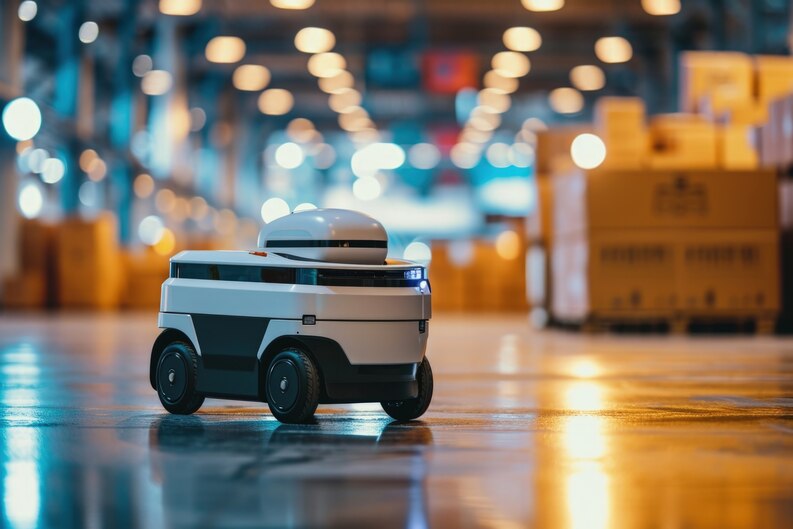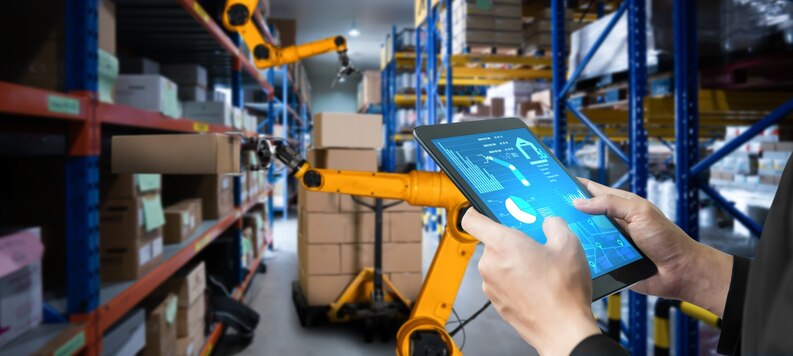The modern supply chain is no longer defined by fixed schedules or linear operations it is shaped by speed, accuracy, and adaptability. With the exponential growth of e-commerce, same-day delivery expectations, and rising labor costs, the need for warehouse automation has never been more urgent. However, as with any significant transformation, organizations must justify these investments through a clear, measurable return on investment (ROI).
ROI in warehouse automation goes far beyond simple cost savings. It encompasses performance improvements, long-term operational stability, risk reduction, workforce optimization, and even brand reputation. Companies that successfully automate their warehousing systems report gains in order accuracy, fulfillment speed, floor space utilization, and throughput capacity all of which directly impact revenue.
This article explores the ROI of warehouse automation through a comprehensive lens starting with robotic integration, breaking down cost structures, examining the future trajectory of automation technologies, and closing with how intelligent systems deliver long-term returns that often surpass initial expectations.
Robotic Automation in Warehouses
Robotic automation is transforming warehouse operations from labor-intensive to data-driven and machine-coordinated environments. Robotic systems including Autonomous Mobile Robots (AMRs), Automated Guided Vehicles (AGVs), robotic arms, and intelligent conveyors are now at the heart of material handling, inventory sorting, picking, packing, and transport within facilities.
The value of robotic automation lies not just in replacing human effort, but in multiplying the speed and reliability of operational workflows. Where a manual worker might pick and place 80–100 items per hour, a well-calibrated robotic system can exceed 600 picks per hour, operating 24/7 with near-zero downtime. This significantly increases throughput, especially during peak demand periods such as Black Friday or seasonal surges.
Additionally, modern robots come with real-time data integration, allowing them to update inventory systems instantly, track item movement, and optimize routes. This contributes to better inventory visibility, fewer errors, and smarter space utilization key factors in operational efficiency.
From an ROI standpoint, robotic automation allows warehouses to:
- Scale operations without proportionally increasing headcount
- Eliminate inefficiencies caused by fatigue, injury, or absenteeism
- Maintain service-level agreements (SLAs) with greater consistency
- Reduce reliance on hard-to-find skilled labor
Investments in robotics often pay off in under 2 to 3 years, with ongoing savings and productivity improvements compounding over time.
Warehouse Automation Cost
Understanding the true cost of warehouse automation is essential for calculating ROI accurately. Costs typically fall into four categories: capital expenditure (CapEx), integration/setup, maintenance, and operational training.
- Capital Costs
This includes the purchase or lease of automation hardware robots, sensors, sorting machines, conveyors, and software platforms. Depending on the complexity and scale, upfront investments can range from $500,000 to several million dollars. For example, implementing a fleet of AMRs may cost between $20,000 to $100,000 per unit, with additional infrastructure requirements. - Integration and Customization
A significant portion of costs comes from integrating automation with existing warehouse management systems (WMS), enterprise resource planning (ERP) systems, and floor layouts. Customization to meet specific operational needs may require additional software engineering, mapping, or retrofitting. - Training and Change Management
Employee training, system testing, and gradual deployment are crucial steps that ensure adoption and smooth operation. Change management costs though often overlooked can affect overall implementation success. - Maintenance and Updates
Automated systems require routine software updates, hardware maintenance, and occasionally replacement parts. However, the predictability of these costs often makes them more manageable than fluctuating labor expenditures.
Though the upfront investment can seem high, it’s critical to understand that manual operations come with hidden, recurring costs such as high turnover, recruitment, training, inefficiencies, and injury-related downtime. According to a report by the MHI and Deloitte, nearly 80% of warehouses lack any form of automation, yet companies that automate experience up to 60% cost savings over a 5-year window.
By assessing cost per item shipped, labor hours per order, and error rates, warehouse operators can build a data-driven model showing how automation reduces unit costs over time while increasing order volume capabilities.
The Future of Warehouse Automation
The future of warehouse automation is not only more capable but also more intelligent, scalable, and accessible. Several advancements are reshaping the industry and expanding ROI potential:
- AI-Driven Decision Making
Machine learning algorithms are being embedded into warehouse automation systems to allow robots and software platforms to make autonomous decisions based on historical trends, predictive analysis, and real-time environmental feedback. These systems can:
- Predict demand surges and adjust workflows automatically
- Dynamically reassign robots based on congestion or delays
- Detect errors and optimize task prioritization
This shift from reactive to predictive operations unlocks new levels of efficiency and future-proofs warehouse investments.
- Modular and Scalable Designs
Future warehouse solutions are increasingly modular, enabling companies to start small and scale gradually. Rather than replacing entire systems, businesses can add new robotic units, sensors, or software features based on growth and budget.
This approach significantly lowers the barrier to entry, giving mid-sized enterprises access to the benefits of automation without the risk of massive CapEx upfront.
- Interoperability and Open Platforms
Open-source control systems and standardized protocols are promoting interoperability across vendors. This allows operators to combine hardware and software from different providers without being locked into proprietary ecosystems resulting in more competitive pricing and flexible upgrades.
- Sustainability and Energy Efficiency
Modern automation tools are more energy-efficient, reducing overall power consumption per item moved or packaged. Some robotic systems use regenerative braking or smart power cycles, aligning with corporate sustainability goals.
According to Statista, the warehouse automation market is projected to exceed $69 billion by 2025, driven by advances in robotics, AI, and cloud computing. Businesses investing today aren’t just upgrading tools they’re building an operational model that evolves with the industry.
A Warehouse Automation System
A well-designed warehouse automation system is an ecosystem where machines, data, and human oversight come together to streamline every aspect of logistics. These systems are no longer limited to just pick-and-place robots; they integrate:
- Automated storage and retrieval systems (AS/RS)
High-density racking systems with robotic shuttles that optimize vertical space and speed of retrieval. - Autonomous Mobile Robots (AMRs)
Intelligent units that can navigate dynamic environments using LiDAR and vision-based navigation to transport goods between workstations. - Computer vision and machine learning
Tools that can identify items, scan barcodes, monitor package integrity, and verify order accuracy with minimal human involvement. - Real-time warehouse management systems (WMS)
Software that tracks inventory, prioritizes picking routes, monitors worker performance, and communicates with robotic units to assign tasks.
A warehouse automation system is not just a collection of machines it’s a coordinated framework designed to maximize space, minimize errors, and optimize throughput. As these systems become more modular, cloud-based, and intelligent, they unlock sustainable ROI across multiple business dimensions: cost, capacity, flexibility, and customer satisfaction.
Conclusion
Calculating the ROI of warehouse automation is no longer about simple cost versus benefit it’s about long-term resilience, strategic adaptability, and competitive advantage. While the initial costs may seem high, the operational returns from labor reduction and accuracy improvements to throughput gains and data visibility are both measurable and sustainable.
As logistics becomes the backbone of modern commerce, automation is not just a trend; it is a necessity. Warehouses equipped with intelligent systems, robotic workflows, and real-time analytics are not only faster and safer they are better positioned to grow, scale, and lead.
Companies that invest in warehouse automation today are not merely cutting costs they are future-proofing their operations, increasing agility, and turning logistics from a cost center into a powerful enabler of business growth.




